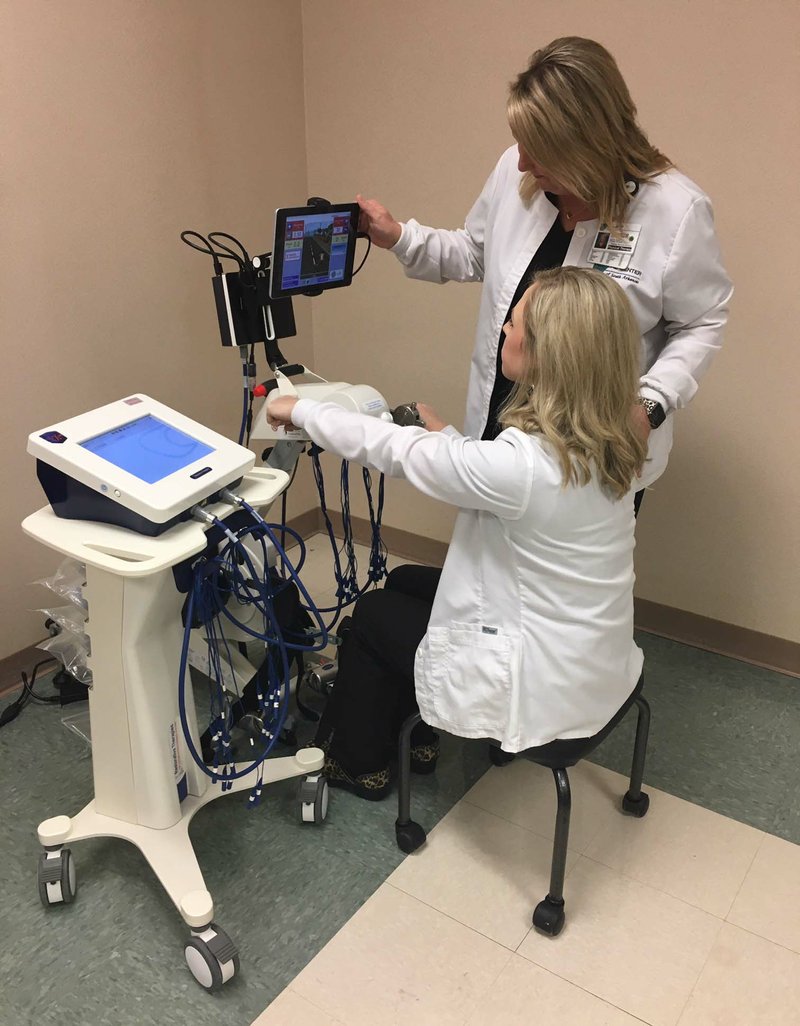The Medical Center of South Arkansas received state of the art technology last week and is starting to use it with patients in rehabilitation therapy.
The hospital will use the RT300, which focuses on the lower half of the body, and XCITE, which focuses on the upper body, for restorative therapy. The machines use integrated functional electrical stimulation with motor assistance/resistance activities.
Amber Steele, director of therapy services at MCSA, said the machines use electrical stimulation to up to 12 muscle groups at one time to do a task.
“We’re so excited,” Steele said.
Shelby Cater, director of in-patient rehab at MCSA, said the hospital has one of two RT300 machines in the entire state — the other is in northwest Arkansas — and the only one to have the XCITE machine.
XCITE is for fine motor tasks, like brushing teeth or brushing hair.
The machines specifically benefit patients who have suffered from a stroke, brain injury, multiple sclerosis or any other myopathy.
“It’s all about memory and usually it’s something associated with the brain,” Cater said. “It’s all about repetition.”
Steele said it’s reeducating the muscles to perform tasks.
Cater said the stimulation can decrease muscle spasms, improves circulation and prevents break down. Steele added it can reduce atrophy and increase range of motion.
“(It also) gives them that feeling they accomplished a task, even though they’re not really able to perform it by themselves,” Cater said.
Cater said the machine will only stimulate the muscle as much as it needs to in order for someone to complete a task. Patients will also go through muscle testing to see how much stimulation is needed for each patient.
Steele said the machines will also show the users how long the patient is able to complete the task themselves and how long the machine is firing the stimulant.
Cater said to qualify for use of the machines, a patient must meet similar requirements for in-patient rehab, which are the following: medical necessity and being able to actively participate in three hours of intense therapy.
Patients who have previously been discharged from rehab who didn’t quite reach their goal of mobility will have the opportunity to return and use the equipment. However, Cater said the first six months is the best chance a patient has to regain their mobility, but there’s not a maximum time limit from when they were discharged to be able to use the machines.
Cater and Steele said the goal of in-patient rehab is to get patients home and back to their form of independence.
Cater said the average stay for in-patient rehab is about 10 days, but it’s dependent on the patient’s diagnosis and needs.
Steele said patients may feel a strong tingling as a side effect, but that it’s not uncomfortable and it doesn’t hurt.
Cater said a family member can refer a patient to the machines by calling the hospital’s referral line at 870-863-2588.
